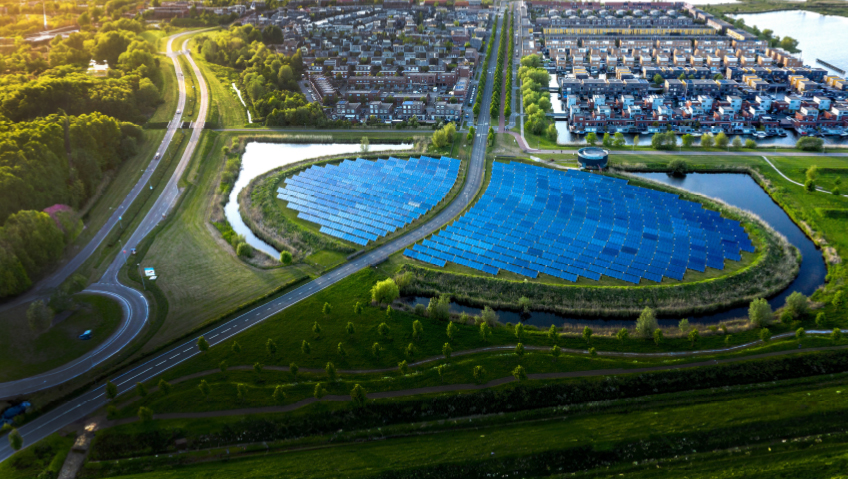When it comes to construction, sustainability typically refers to efforts to mitigate the environmental impacts of projects through the use of green materials, techniques, technologies, and practices. Seldom does it consider the concept of equity, but the two are inextricably linked.
When sustainability is reserved only for those who can afford it, it reinforces the social inequity that is deeply rooted in the built environment. When this is the case, sustainability comes at more than just a financial cost; it creates an equity gap through the exclusivity of its benefits. If the benefits are not equitably enjoyed, it ceases to be sustainable.
Measuring success
When equity and sustainability are viewed as one, it promotes a cascade of positive impacts. Socially sustainable projects comprising justly designed places promote healthy, resilient, vibrant, and empowering communities for people and the environment to thrive, which improve outcomes long-term. While the initial costs incurred may be higher, socially sustainable design and construction leads to lower long-term costs for maintenance and repair, reduced energy consumption, and improved social determinants of health and safety. It is an investment for the future.
Despite the ripple effect of positive outcomes associated with social sustainability, there are opponents who complain about the upfront costs, lower bottom lines, and the challenges associated with measuring the positive social impacts that are derived from equitable design. Unlike tangible measures of environmental progress like emissions reduction, measuring social impact requires a multidisciplinary approach that includes sociology, psychology, economics, medicine, and other social determinants. The entire lifecycle of the project must be taken into consideration, from the materials to the construction practices to the ripple effects on the people who use and surround the space.
For instance, what good is a green project if it displaces people or fails to serve the immediate needs of the community? Luckily, there are certifications and standards that have incorporated equity into their green design and construction criteria to guide projects along.
Certified sustainability
There are several certifications that are designed to assist project teams in achieving sustainable outcomes. One of the most popular is Leadership in Energy and Environmental Design (LEED), which is typically associated with environmental standards, though it has evolved to include diversity, equity, and inclusion (DEI) by offering credits, pilot credits, and a separate checklist for projects.
The LEED Pilot Credit for Social Equity in the Supply Chain and LEED Social Equity within the Community Credit are new opportunities for projects to achieve credit. The latter requires the completion of two portions of the Social Economic Environment Design (SEED) network evaluation.
Similarly, the International WELL Building Institute’s WELL Community Standard is an effort to impact individuals within the walls of the space in addition to the public spaces where they spend their time.
From the standard itself, “A WELL community is designed to support health and well-being across all aspects and areas of community life. The vision for a WELL community is inclusive, integrated, and resilient, with a strong community identity fostering high levels of social interaction and engagement. Resources in a WELL community—natural, human, and technological—are used effectively, equally, and responsibly to meet the community’s current and future needs and priorities.”
Arguably, the most scrupulous of all the certifications is the International Living Future Institute (IFLI) green building standard, which is the first and only to require considerations of equity, including the seven principles of Universal Design and the Architectural Barriers Act.
An investment for the future
Investing in sustainability is not just for organizations who have equity as part of their mission, or environmental and social guidelines (ESG) that need to be met; it can be beneficial for the private and the public sector alike.
Governments are beginning to mandate equitable sustainable development as part of building standards, particularly for publicly funded projects and social housing. New York State instituted the Enterprise Green Communities Criteria required for all new Department of Housing Preservation and Development projects in New York City, which is a big step to ensuring sustainability is also accessible in future projects.
When spaces are designed equitably and sustainably, they are inclusive to all, regardless of socioeconomic status, physical ability, or any other lines of difference that can be drawn. To achieve equity in sustainability, it requires a shift to social impact thinking. From a project’s outset, architects must consider themselves and the work they do as agents of change creating projects that incorporate principles of universal design to have a meaningful impact.
As you would with any project, the best place to start is with the stakeholders—the who’s who of the project. Who is the space being built for? Who will be on the project team? Will the team be diverse and inclusive? Will the project promote inclusion for its tenants and the community? What materials will be used? What building practices will be utilized?
From the exclusion of materials containing harmful chemicals to the inclusion of sustainable materials like bamboo, natural stone, and cob and recycled materials like steel, plastic, concrete, and reclaimed wood, there are many ways to incorporate more sustainable products into construction projects. Companies like CarbonCure Technologies, a manufacturer of carbon removal technologies that utilize carbon dioxide by injecting it into concrete for permanent storage, have been around since 2012 and continue to find ways to elevate the possibilities in the advancement of sustainable construction materials.
Even something as simple as using white paint on roofs to reflect heat, or the inverse, black paint to generate heat that can be utilized to heat the building or water sources used within, can make a big impact. These simple changes can be mandated and instituted to have a meaningful impact on a greater scale.
A higher standard of care
To ensure sustainability is equitable, new policies and approaches are required. In the U.S., foreign companies are being held to higher standards. For example, there is a solar boom taking place in the U.S., which is creating unprecedented demand for solar panels, an essential component of which is polysilicon, 80 percent of which comes from China.
One third of China’s polysilicon is sourced from Xinjiang, where the Chinese government is accused of the repression and forced labor of the Uyghur people. In 2021, the U.S. instituted the Uyghur Forced Labor Prevention Act (UFLPA) and has since detained thousands of shipments of Chinese products under a ‘rebuttable assumption,’ a process by which the goods can be released if the supply chain can be proven.
Legislation like this goes a long way to ensure products are equitable from the source, but the challenge becomes the regulation, as Chinese-sourced materials can circumvent these rules because they are used as components for many of the U.S. major solar panel suppliers. But despite the loopholes, this is an important step the government has taken to ensure that the materials used are not just sustainable, but equitable as well. Solar panels can support sustainable energy generation, but not if it comes at the cost of human life and freedom.
Stronger policies, better outcomes
When equity is embraced through sustainable design, it improves both access and inclusion. Policies that support social sustainability in building practices, standards, and designs require a rethinking of the concept of sustainability and how it is mandated in construction. If governments intend on meeting their climate goals, this is a good place to start.
In addition to equitable and sustainable building materials and approaches, equity can be incorporated in the built environment in countless ways. Diverse housing types attract diverse populations and by rethinking spaces and their functions to serve the community in which the project is located and the relationship between the people and the spaces, equity will be improved. Further, the elimination of inequitable zoning practices, the commodification of land and housing, and other exclusionary practices can all play a part in mandating equitability.
To achieve equity will require a multifaceted partnership between government and industry to ensure that the way spaces are built and materials are used is not just environmentally sustainable, but socially and economically sustainability as well, to maximize the benefits therein for people, the planet, and the bottom line, for the long-term.






